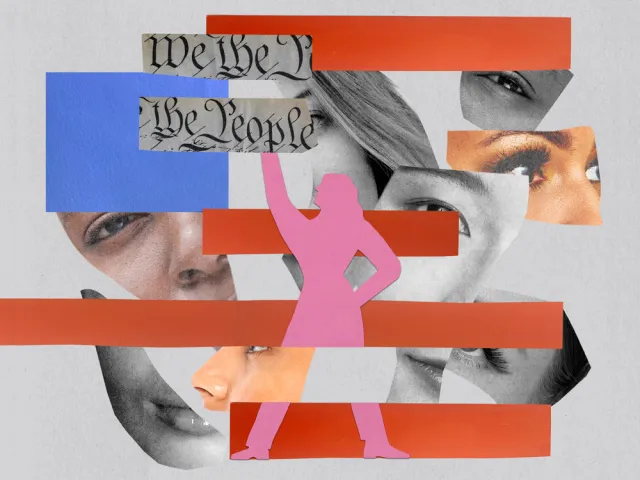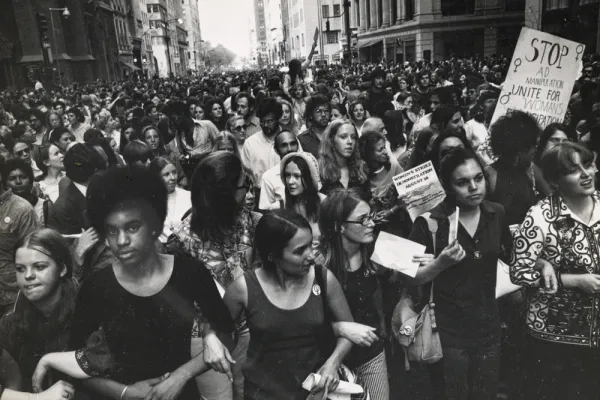Who’s Afraid of the ERA?
Research & Inquiry
Revealing the Real Opposition to Women’s Constitutional Equality
Published January 10, 2023
While the vast majority of Americans support the ERA, some people on both sides of the political spectrum express concerns that the amendment might lead to elimination of sex-segregated bathrooms, locker rooms, sports teams, schools, and more.
These concerns are not new. Back in the 1970s, when state ratification debates were raging, conservative activist Phyllis Schlafly and others opposed to the ERA argued that it would require unisex bathrooms.
Today, most people who oppose the ERA appear to be motivated chiefly by concerns that it would strengthen abortion rights. But many still express concerns about single-sex spaces. Some feminists worry that the ERA could undermine programs designed to benefit women, such as single-sex sports or shelters serving female survivors of intimate-partner violence. If the ERA is finally recognized, would these programs become illegal?
The ERA prohibits states and the federal government from denying or abridging equality of rights based on sex. The amendment would not require private schools like Smith College to admit cisgender men, nor would it order private organizations and programs serving women to open single-sex shelters to cisgender men.
Furthermore, the ERA would not bar all distinctions based on sex. It requires the government to justify laws classifying people based on sex by showing they are necessary to achieve a compelling government objective. Remedying discrimination and the disadvantages women experience in society, protecting equal opportunities in sports, or providing privacy or safety for women would likely be considered compelling government objectives.
In addition to guaranteeing equal rights, the ERA empowers Congress to pass laws to enforce equality, to address such issues as ongoing pay inequity, high rates of violence against women, and the lack of paid parental leave and child care support—which disproportionately impact women.
The ERA could strengthen abortion rights, although the Supreme Court in Dobbs recently denied that abortion bans impact women’s equality rights. But other courts have ruled that forcing a woman to carry a pregnancy to term against her will violates her equal right to bodily autonomy, freedom, and dignity.
The real opposition to the ERA—and where the money has always come from to block recognition of women’s constitutional equality—originates in two places: religious organizations like the U.S. Conference of Catholic Bishops, which opposes women’s equality, and corporate America, which makes billions of dollars each year from paying women less than men and charging them more.
When Gloria Steinem ’56 visited Smith last September, she spoke about how the failure to recognize women’s equal rights in the Constitution makes the United States an outlier in the world. “We are not formally part of the Constitution when every other democracy in the world includes women,” Steinem said. “I never dreamed we’d still be fighting this battle after so many years.”
An explicit sex-equality provision in the U.S. Constitution is long overdue. And, due to recent rollbacks of women’s rights happening across the country, it’s more necessary now than ever.

Carrie N. Baker is a professor of the study of women and gender at Smith.
This story appears in the Winter 2023 issue of the Smith Alumnae Quarterly.
Democracy in Distress
A Special Series

Still Unequal
Two generations of Smithies discuss the current state of the Equal Rights Amendment and why it matters now more than ever.
by Cheryl Dellecese
Marchers participate in the 1970 Women’s Strike for Equality in New York City. Photograph by Diana Davies/Sophia Smith Collection
